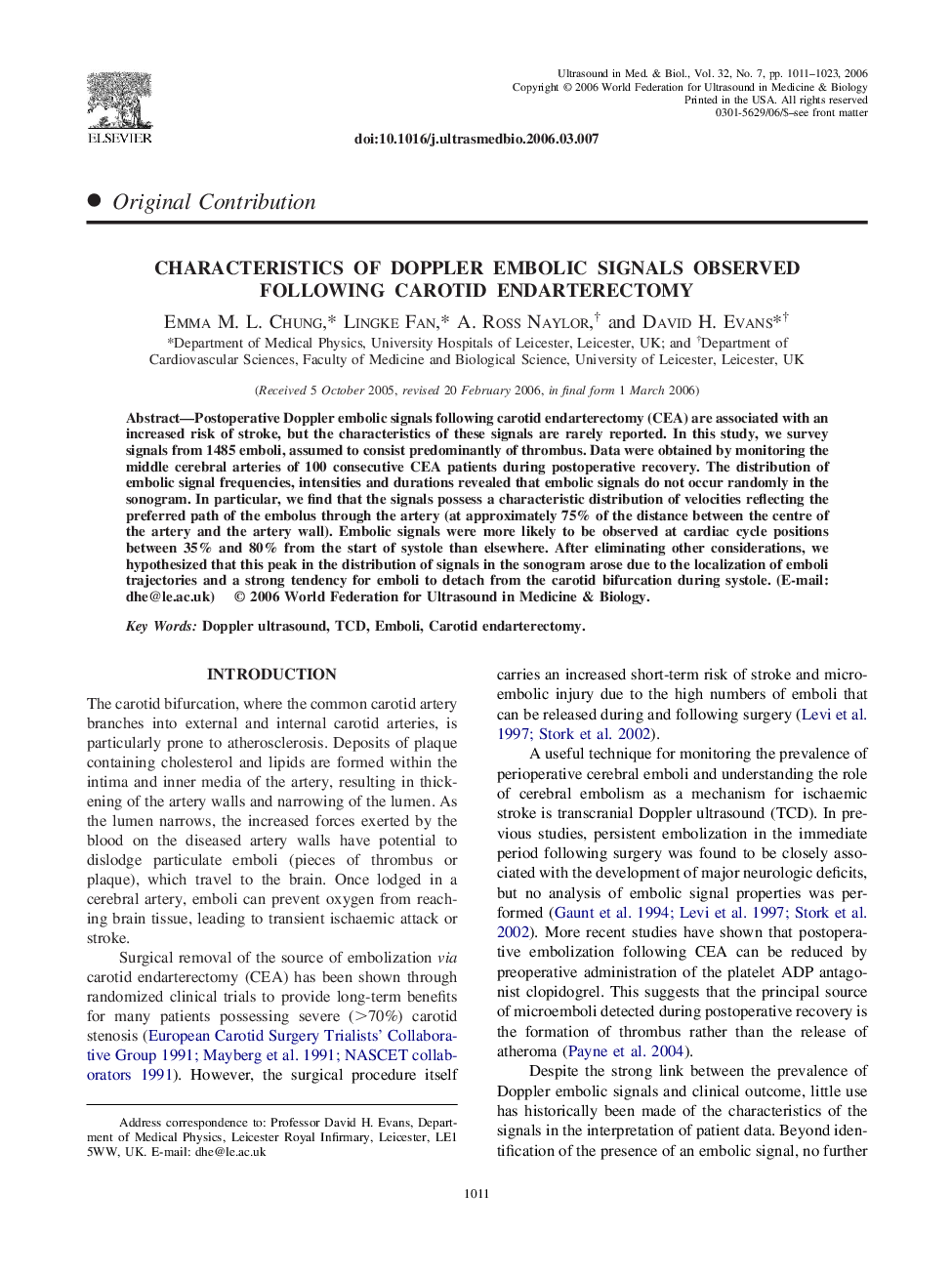| Article ID | Journal | Published Year | Pages | File Type |
|---|---|---|---|---|
| 1762287 | Ultrasound in Medicine & Biology | 2006 | 13 Pages |
Abstract
Postoperative Doppler embolic signals following carotid endarterectomy (CEA) are associated with an increased risk of stroke, but the characteristics of these signals are rarely reported. In this study, we survey signals from 1485 emboli, assumed to consist predominantly of thrombus. Data were obtained by monitoring the middle cerebral arteries of 100 consecutive CEA patients during postoperative recovery. The distribution of embolic signal frequencies, intensities and durations revealed that embolic signals do not occur randomly in the sonogram. In particular, we find that the signals possess a characteristic distribution of velocities reflecting the preferred path of the embolus through the artery (at approximately 75% of the distance between the centre of the artery and the artery wall). Embolic signals were more likely to be observed at cardiac cycle positions between 35% and 80% from the start of systole than elsewhere. After eliminating other considerations, we hypothesized that this peak in the distribution of signals in the sonogram arose due to the localization of emboli trajectories and a strong tendency for emboli to detach from the carotid bifurcation during systole. (E-mail: dhe@le.ac.uk)
Related Topics
Physical Sciences and Engineering
Physics and Astronomy
Acoustics and Ultrasonics
Authors
Emma M.L. Chung, Lingke Fan, A. Ross Naylor, David H. Evans,
